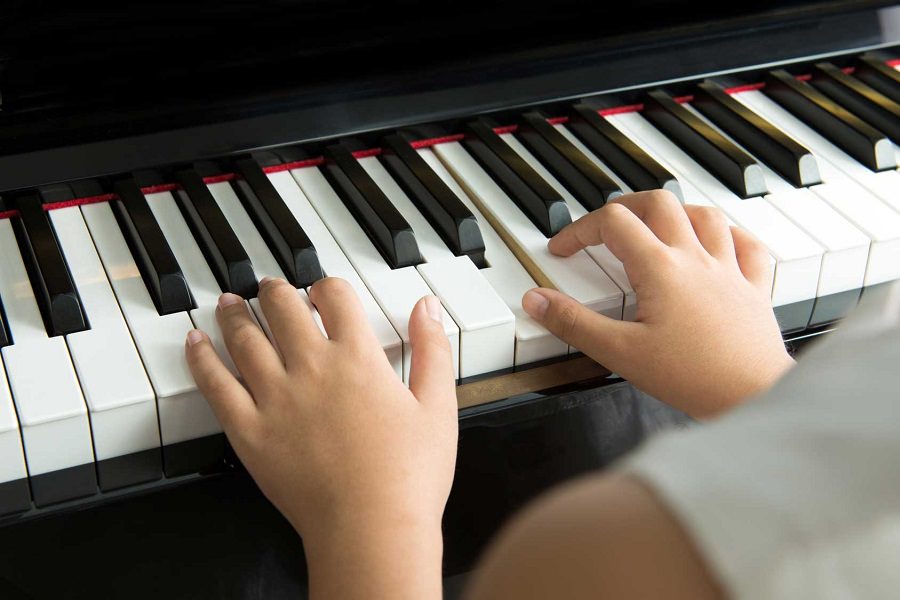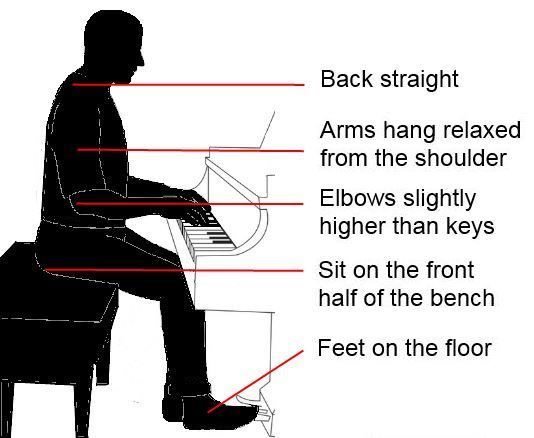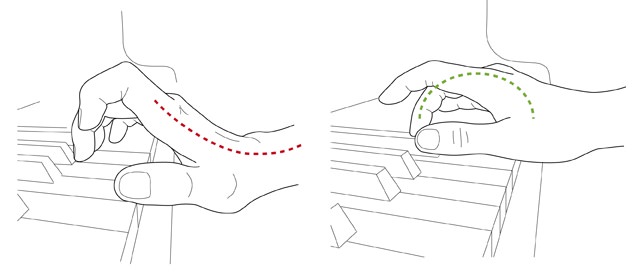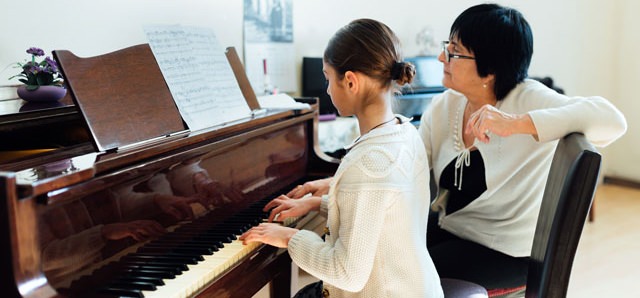
Table of Contents
Have you ever wanted to become a pianist? Learning to play the piano is an ageless and timeless skill. You cannot become too old to learn to play the piano. All it takes is eagerness on your part. The possibilities are endless and there is more than one way to achieve your goal.
In this article we will discuss the basics of playing the piano including posture and finger placement. From there, we will move into reading notes, playing chords, and understanding music theory. In short, we will take the complex task of learning to play the piano and break it down so that everyone is able to understand.
At the end, we will take about the various learning aids and online programs that make learning easy and effective. Soon you will be able to enjoy playing the piano in the comfort of your own home.
Learning Piano: Common Questions
Let’s address a few questions that you might have about learning to play the piano.
What is Included in Learning to Play the Piano?
First, music theory, posture, and finger placement will be stressed. These are very important parts of being successful with learning to play the piano. Posture and finger placement as well as hand position are important techniques that enhance your ability to play the piano. Music theory is the act of reading and playing music.
What is Finger Placement and What is Its Importance?
Finger placement is a fundamental that a beginning pianist must master. To aid the learner, each finger is assigned a number. When reading sheet music, the number is often written above the note to aid you in using the correct finger on the piano key.
You might wonder why this is important. Well, proper finger placement helps the pianist play music smoothly and with ease. Since everyone’s hands are not the same size, fingering lets each pianist reach a greater number of notes no matter if your hands are large or small.
When Someone Says “Proper Piano Posture,” What Do They Mean?
To have proper piano playing posture, you must consider your seated position on the piano stool or bench, your distance from the piano to your body, and how tall is the piano stool or bench. To have perfect piano posture, these distances would be such that your arms and shoulders feel natural – not raised or lowered. We should be able to bend the elbows easily without placing tension or stress on the shoulders. The hands should be curved over the keyboard. The forearms should remain parallel to the floor. Overall, the upper body, arms, and hands should be at ease.

When considering the distance the body is from the piano. You should be able to access the pedals easily while placing your hands on the keys without putting stress on your back. Ideally, you will sit on the bench or stool at an exact 90-degree angle with a straight, relaxed back. If you find yourself learning slightly forward, this is just fine. Often, people perform in this position.
You should also observe where you sit on the piano stool or bench. Optimally, you will sit at the edge of the bench; however, your entire buttocks should rest on the stool or bench. Avoiding sliding to the middle or back of the stool or bench as this will alter your center of gravity and cause your back and upper body to become tense. Misplacement of the back and upper body can cause injury and pain. The body should be placed so that you can feel secure yet have the ability to move freely.
How Should I Position My Hands While Learning to Play the Piano?
You definitely have a correct hand placement for playing piano. Learning the proper hand position is a key component. Faulty hand position can hinder your progress. People sometimes have difficulty maneuvering their hands easily. Proper hand position can help these individuals. Using improper hand position can result in pain, cramping, or injury after playing piano for a short time.
When envisioning proper hand position, get a mental picture of your hand holding a tennis ball. The palm will be arched with the keys curved like when you hold a ball. When you hold your hands in this shape, you can easily reach any piano key easily and with causing any injury or getting tired quickly.

Finger nails that are groomed and short make it easier to play the piano. When you have long nails, they click on the keys and may interrupt the beauty of the music piece you are playing. Also, maneuvering the keyboard with long nails may cause faulty hand placement and position which in turn hinders your progress.
How is Music Theory Important to Piano Playing?
Music theory is the language of music. If we want to make beautiful music, we must learn the language and understand it completely.
Music theory includes guidelines and rules for reading music. When looking at some sheet music, you can quickly see that piano music has two staves or staffs and each has its own clef.
Along with the staves and clefs, you notice that sheet music has time signatures and key signatures. There are various shaped notes, different spaces, and different lines. Some notes are set up in groups called chords. The notes in a chord are played together. Music theory must be studied thoroughly and understood. Soon, they will become second-nature.
Since you are ready to learn to play the piano, you might wonder where and how to get started. The first step is to select the method that seems best for you.
Methods for Learning to Play the Piano
You have many alternative for learning to play the piano. Some of your options are:
- Hire a piano teacher to offer one-on-one instruction at your home.
- Take lesson from a piano teacher at their studio.
- Learn on your own by using an illuminating piano or keyboard.
- Purchase a software program such as “Learn Piano in 30 Days”, “Playground Sessions”, or “Piano Marvel”.
- Use online ebooks such as “Piano for All” or other online services.
- Participate in a do-it-yourself program using books.
Traditional Methods
For many years, people thought that piano lessons were taught when the learner took lessons from a piano instructor. Some piano instructors made home visits to work with you in the privacy of your own home. Other instructors had a music studio where the lessons were taught.

This method has both disadvantages and advantages. Perhaps, attending a weekly lesson is inconvenient or does not fit your schedule. Sometimes an area might not have enough skilled piano teachers. Other people might want to take lessons when they had time and follow their own schedule or pace. To meet these needs, they must follow a program that meets their needs better than the traditional methods.
Piano Lessons Using Technology or Software
Because of technology, we can learn to play the piano by two different methods. When you learn using software, you can be more flexible. Also, you can hone in on a specific type of music that appeals to you.
A piano with lighted key function provides an interesting way to learn to play piano. You can learn to play on a 61-key digital piano connected wirelessly to music software. If you do not have wireless capabilities, a USB cable can be used. This software comes in versions that are compatible with a PC or a Mac. The software even works on an iPad by using Bluetooth technology.
The lighted keyboard uses MIDI controller to light the keys in various colors and combinations. All you have to do is choose the song you want to learn to play. The software then send a signal to illuminate the proper keys just prior to you playing them.
When using the lighted keyboard, you can learn to play your favorite songs faster and are motivated by the immediate progress. This combination allows you to play a song on the piano today! You can get ahead in learning to play the piano when you buy a digital piano. This is a great way to get started!
The many great piano pedagogic software programs on the market today provide a great way to learn to play the piano. The bonuses that come with the software are one of the biggest advantages of this method. Playground Sessions and Piano Marvel offer piano students real time piano coaches to motivate and assist them. Also, these programs provide videos, practice tracking programs, sheet music that can be printed, worksheet for checking understanding, and much more.
Beginning piano students will feel sure that these software programs are their all-in-one choice for learning.
Another fun factor for piano software is the recording session function. Just a few clicks and you can record yourself. This makes learning the piano more fun and less work. You will find yourself more motivated and eager to learn.
These methods are proven to produce good results. Some students use these programs exclusively in learning to read music, master music theory, understand musical notation, and play by ear. These programs are not just for beginners. They can provide instruction for students at all levels. Even professionals may benefit for the offerings of piano software.
Piano for All is an interactive ebook that provides yet another great way to learn to play the piano.
This program instructs you and builds a foundation based on chords that is applicable to many music genres. This empowers the piano student. With this strong foundation, even the beginning pianist can make music sound and feel great.
Piano for All teaches basic music concepts in an engaging, entertaining way. The lessons scaffold with each one building on the one before. Students participate in an interesting combination of learning methods and are able to read music quickly. Students do not rely on the traditional learning method that emphasizes music theory. Through Piano for All, theory is very easy.
Piano for All makes an interesting program for learning piano because it uses a many different techniques. The basic principle of the program is the students learn best when they listen and see at the same time. Performing these two actions simultaneously gives students an edge that other programs can’t seem to offer. Through seeing and hearing, students learn to play by ear and sight read music.
Perhaps one of the best things about Piano for All is that it is not costly. A one-time purchase provides the program and great customer support. The program installs quickly and easily.
What does this mean to you, the piano student? Each ebook includes a two videos showing a keyboard – one being played and one just lighting up the keys while also showing the name of the key being played. You can get to know the keyboard and learn the names of the notes without spending any time working with music theory.
The online instructor shows you proper hand placement and tell you what to do. The teacher points out music terms as you need them while progressing through the program. The program includes music theory as you go. You never have to spend any time working on boring theory. In essence, you are learning two skills in one – theory while learning to play.
Do It Yourself Books
Some self-instruction books are very beneficial. Some books like “Piano for Dummies” provides a great start into learning how to play the piano. You can learn many good skills and theories from books. The books are similar to the software in that you can cover the material at a learning pace that is right for you.